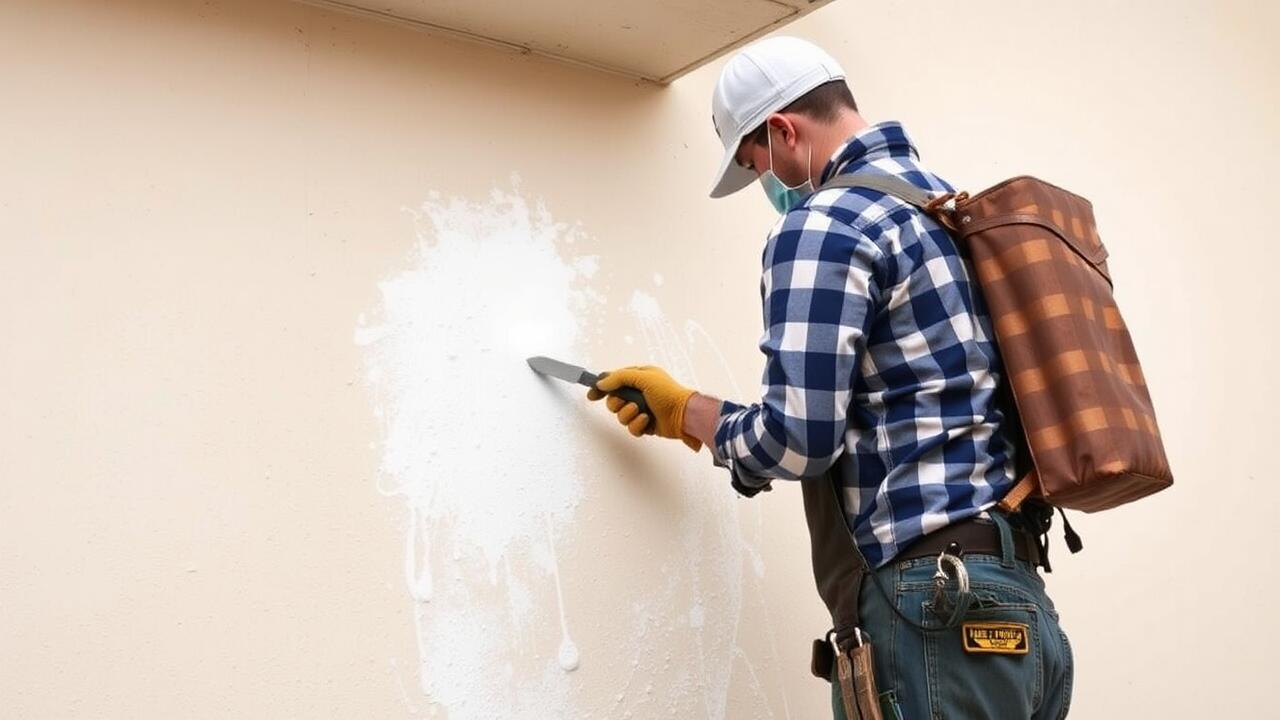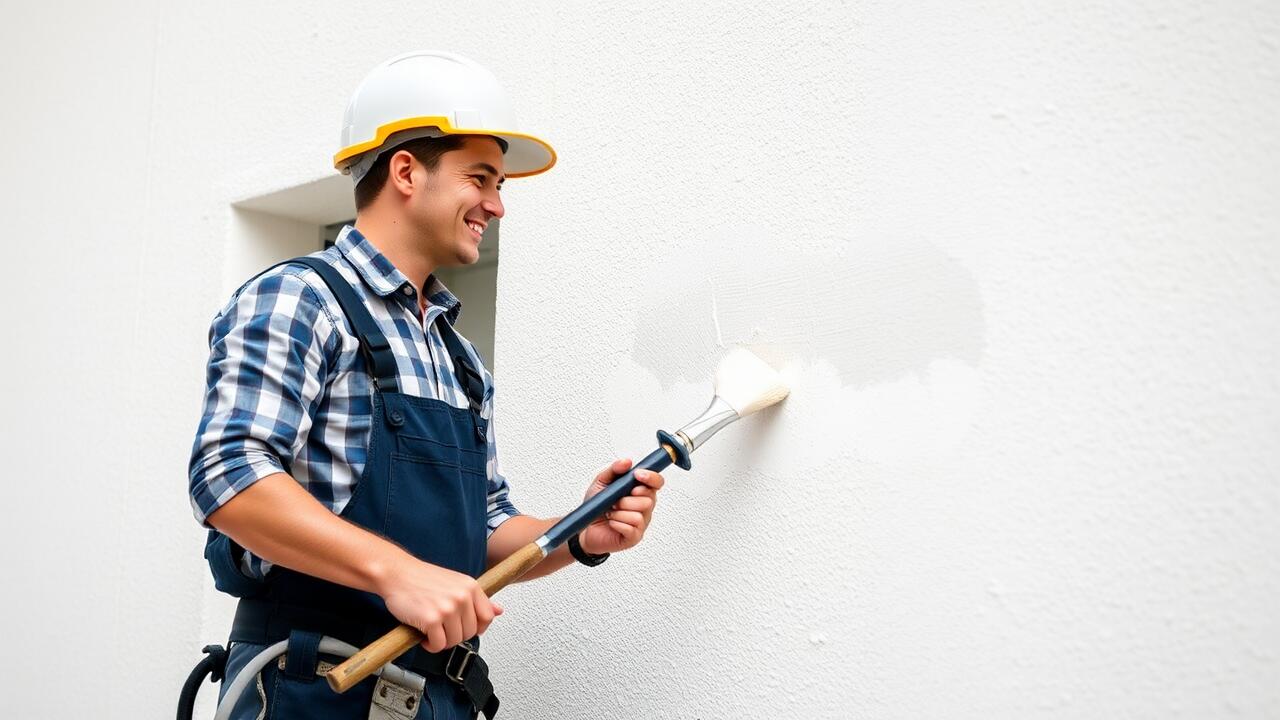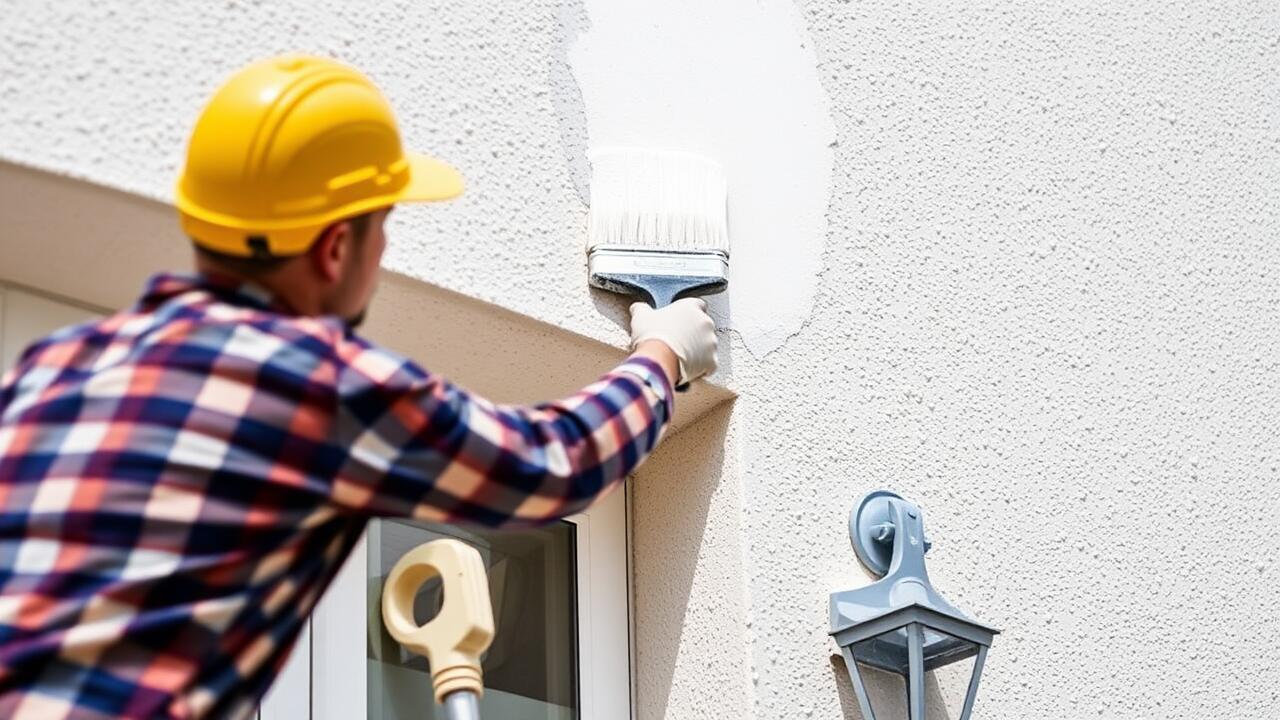
Creating the Brown Coat
The brown coat serves as a crucial intermediary layer in the stucco application process. It provides a strong base for the final finish and helps to create a stable surface for the subsequent layers. This coat typically consists of sand, cement, and water, mixed to a workable consistency. Properly applying the brown coat involves ensuring an even thickness that allows for adequate drying and curing. This stage is essential because any inconsistencies can lead to a subpar finish later on.
When preparing for stucco work, consider factors such as weather conditions and the overall environment where the project takes place. It's recommended to allow the brown coat to cure properly before moving on to the finish application. Many homeowners seek professional help and search for “Stucco Painting near me” to ensure an expert touch in achieving a quality finish. This step can significantly impact the durability and appearance of the stucco, making attention to detail during this phase very important.
Importance of Layer Thickness
Layer thickness plays a crucial role in achieving a durable and aesthetically pleasing stucco finish. Typically, the brown coat should be applied at a consistent thickness of about 3/8 inch. This layer serves as the foundation for the final coat and provides necessary support against the elements. Insufficient thickness can lead to a poor texture and increased vulnerability to cracking, which compromises the overall integrity of the stucco surface.
Correctly applying the right thickness also aids in ensuring an even distribution of moisture, which is essential for curing. A thicker layer allows for better moisture retention, facilitating a more even curing process. When seeking professional assistance for your stucco project, consider searching for “Stucco Painting near me” to find local experts who understand the importance of proper layer application and can ensure your finish meets both aesthetic and functional standards.
Achieving the Final Finish
To achieve a smooth finish on stucco, it’s crucial to carefully consider the selection of tools and techniques. Using a trowel or a drywall knife will help in spreading the final layer evenly across the surface. It’s essential to work in manageable sections to maintain a wet edge. This approach minimizes the chances of imperfections as the material begins to set. Properly blending edges is vital to ensure seamless transitions between sections.
After applying the final coat, the next step is texturing or creating the desired finish. Some may prefer a knockdown texture, while others opt for a smooth, flat surface. Regardless of the chosen style, allowing ample drying time is important before any additional work is undertaken. For those seeking professional help, searching for "Stucco Painting near me" can yield local experts who understand the nuances of achieving that flawless look.
Techniques for a Smooth Texture
Achieving a smooth texture on stucco begins with selecting the right tools and techniques. A trowel plays a crucial role in spreading the material evenly, while a float can help refine the surface for that flawless finish. Working in small sections allows for better control, ensuring you can focus on achieving consistency in thickness and texture. Keeping your tools clean and free of excess stucco minimizes the potential for imperfections as you continue your project.
Consider incorporating a damp sponge or masonry brush for the final touch. These can help eliminate any small bumps or ridges that may remain after applying the stucco. If you're not confident in your ability to get the desired result, you can always search for "Stucco Painting near me" to find local professionals who specialize in finishing techniques. Their expertise can lead to a more polished look and save time in the process.
Sealing and Curing
Sealing and curing are vital steps that enhance the durability of stucco finishes. After completing the final coat, it’s essential to let the stucco cure properly to ensure maximum adhesion and prevent cracking. Depending on environmental conditions, curing can take several days. During this period, it's important to keep the surface moist. This can be achieved using a fine mist spray or by covering the stucco with a damp burlap.
Applying a sealant can further protect the stucco from moisture and weather-related damage. This layer adds an extra defense against the elements while improving the overall appearance. When looking for professional help, searching for "Stucco Painting near me" will yield local experts who can assist with sealing and maintaining the integrity of your stucco. Proper sealing not only contributes to aesthetic appeal but also minimizes long-term repair costs.
Best Practices for Longevity
To ensure the longevity of your stucco finish, proper maintenance is essential. Regular cleaning helps to remove dirt and prevent mildew buildup. Inspecting the surface for cracks or damage also contributes to its durability. Addressing minor issues quickly can prevent more extensive repairs down the line. This approach saves time and money while keeping the stucco looking fresh.
When considering aesthetics, professional stucco painting can enhance both appearance and protection. Searching for "Stucco Painting near me" can connect you with skilled painters who specialize in stucco surfaces. Choosing high-quality paint specifically designed for stucco ensures a long-lasting finish that withstands the elements. Regular reapplication of protective coatings can further increase the lifespan of your stucco finish.
FAQS
What is a brown coat in stucco application?
The brown coat is the second layer of stucco applied over the scratch coat. It provides a solid base for the final finish and helps to ensure proper adhesion and thickness of the stucco system.
Why is the thickness of the layers important in stucco application?
The thickness of each layer is crucial because it affects the durability and overall finish of the stucco. A well-measured thickness helps prevent cracking, improves insulation, and ensures a smooth final appearance.
What techniques can I use to achieve a smooth texture on stucco?
Techniques for a smooth texture include using a trowel for finishing, applying a brush or sponge for a polished look, and ensuring consistent application to avoid bumps or uneven surfaces.
How important is sealing and curing in the stucco process?
Sealing and curing are essential for protecting the stucco from moisture and environmental damage. Proper curing helps the stucco set correctly and enhances its longevity, while sealing prevents moisture intrusion.
What are some best practices for ensuring the longevity of my stucco finish?
Best practices include applying a high-quality sealant, ensuring proper drainage around the foundation, performing regular maintenance, and checking for cracks or damage that need repair. Additionally, choose the right materials and adhere to local building codes for optimal results.



